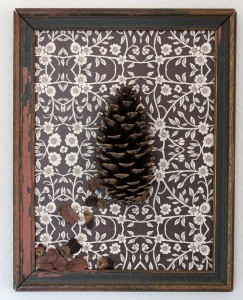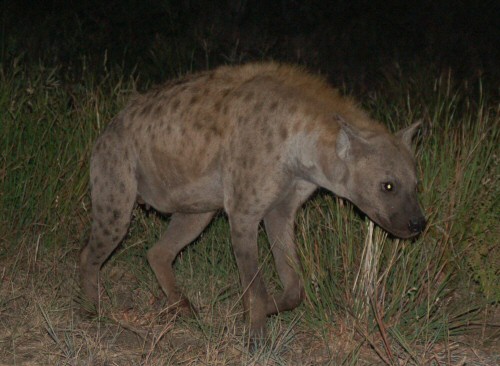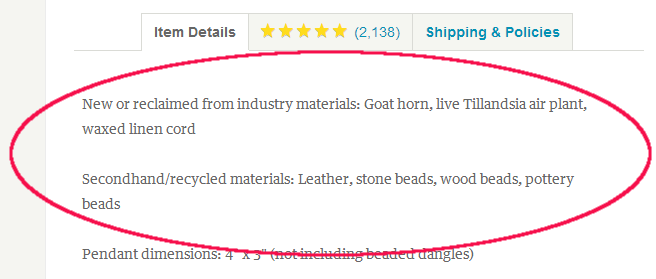Today is an art day. I’m bouncing between a few custom orders and what I call “cleaning through art”. That latter is where I realize the back bedroom where I keep my art supplies is a complete mess, and instead of cleaning everything up like a normal person, I pick up the nearest project idea that’s cluttering up the floor and work on it til it’s done. Sure, it only makes the room a little less messy, but at the end I have a completed project and slightly more space!
One of the projects I’m working on is a dance costume made from a tanned horse’s mane and tail that I got from a Washington taxidermist who collects deceased animals from local farms (among other sources). The tail’s going to be on a belt, as I normally do with my horse tails, and I’m adding a pair of decorated belt pouches; the leather’s all from a deerskin coat I got at the Goodwill Bins a while back. You can see one of the pouches as a work-in-progress in the picture above.
My last Bins trip also netted me the paints next to it. Shopping there is less like a regular excursion where you have a list of things you want, and more like a giant yard sale that happens every day and there’s more brought out every fifteen minutes and you really don’t know what you’re going to go home with. In recent trips I’ve hauled out a pillowcase full of pine cones, a vintage Black and White scotch bottle (empty, of course), an empty antique projector case, and a bag full of several dozen partially full tubes of acrylic paints. I wasn’t able to open up the tubes prior to purchase, so I knew it was a gamble, but it paid off–only one was all dried up, and the rest were primarily in the earthy colors I use a lot. Although acrylics are a better paint green-wise than oils, with fewer toxins and a water base, they’re still a guilty convenience purchase (I mean really, I could just be mixing my own paints from egg and pigments, right?) So I was more than happy to keep these out of the waste stream and keep myself from having to buy new paints for a while, too.
 However, just because they weren’t dried up didn’t mean all the paints were in prime condition. Most of them just needed to be stirred to get the pigment to mix back in with the solvent, but some responded better than others. I hate to waste anything, and so I’ve turned working with imperfect paints into an art all its own. If some of the pigment has solidified and the paint that’s left is thin, it makes a good wash or faux-watercolor. Too thick, but still brushable? Look, it’s a texturing medium! They need to be treated a little differently than when they were new, but they’re far from useless. Even the dried out clumps of pigment can be carved into interesting shapes for assemblage work, or made into flakes to glue in as colored details.
However, just because they weren’t dried up didn’t mean all the paints were in prime condition. Most of them just needed to be stirred to get the pigment to mix back in with the solvent, but some responded better than others. I hate to waste anything, and so I’ve turned working with imperfect paints into an art all its own. If some of the pigment has solidified and the paint that’s left is thin, it makes a good wash or faux-watercolor. Too thick, but still brushable? Look, it’s a texturing medium! They need to be treated a little differently than when they were new, but they’re far from useless. Even the dried out clumps of pigment can be carved into interesting shapes for assemblage work, or made into flakes to glue in as colored details.
Some artists are really particular about their media; they can’t get the exact effect they want if the chemistry’s a little off, or the texture is wrong. I, on the other hand, love all the wrongness. There’s a certain joy I get as an artist out of using things that were discarded by others, whether it’s old hide scraps or bits of plastic or damaged household items. I love the challenge of making the imperfect beautiful, of watching it transform from refused into rejuvenated.
And I think, as a society, we might do better to fall in love with imperfection a little more. I know people who won’t shop at a thrift store because “That’s where the poor people go”. The classism of that statement is a whole other rant in and of itself, but I will point out now that this attitude ties right in with what I was talking about a few weeks back about saving only the best for ourselves. We waste so many resources, artistic and otherwise, because we turn out noses up at the imperfections, the challenges in making something work.
But that’s why I’m a Hyena Artist following the Way of the Scavenger. Their loss is my gain, and few things thrill me more than digging into the Bins and seeing what goodies I come up with to make stuff out of. And now I’m going to go back to painting with my old paints, on the secondhand leather pouch, because it’s going to be awesome when it’s done.
*By the way, the assemblage piece a few paragraphs up is made with one of those aforementioned pine cones, along with other reclaimed materials. You can find out more about it here.







